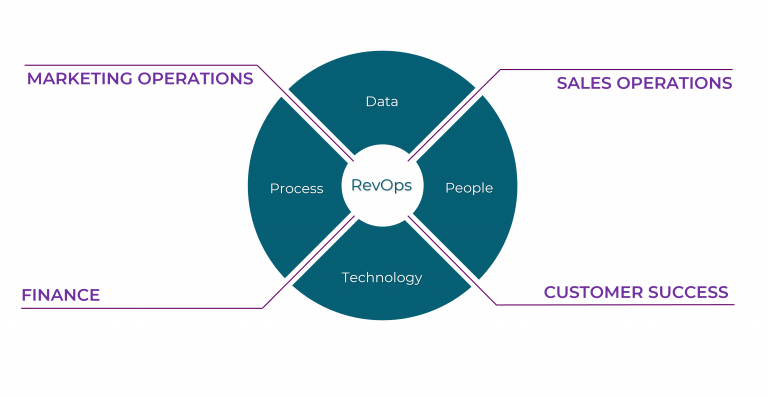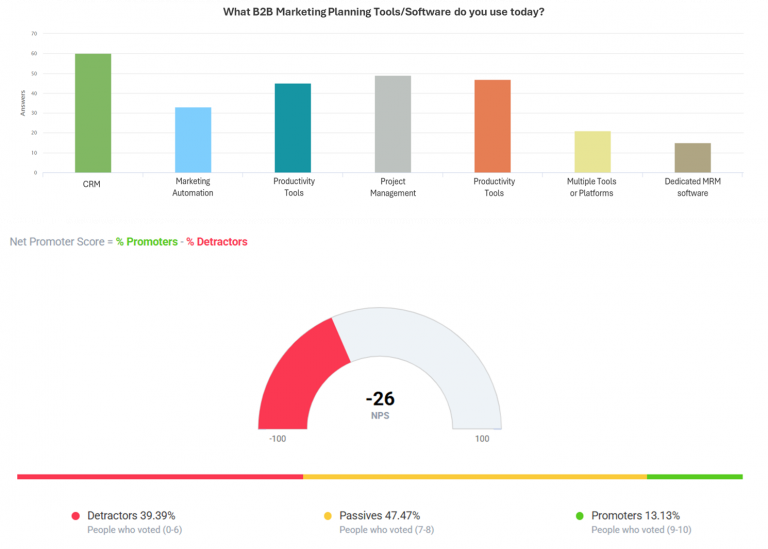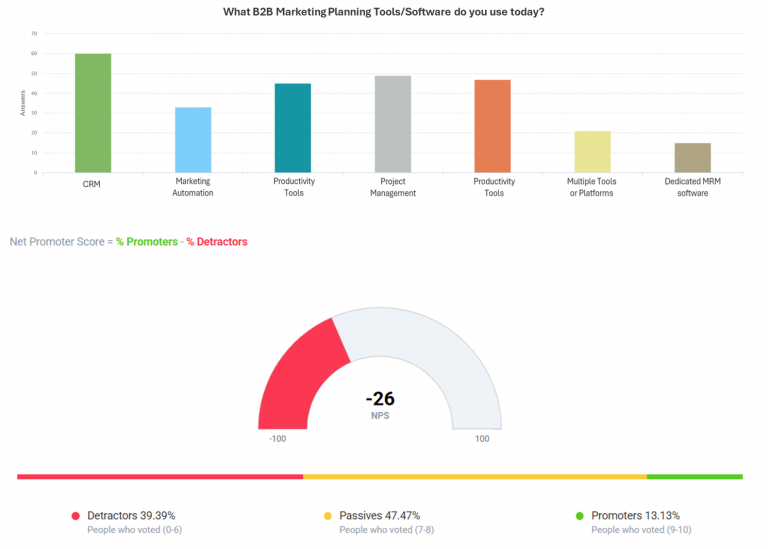Read the latest B2B Marketing insights and research
Read our latest news and blog articles on the world of B2B marketing for small to mid-sized companies. If you’re a B2B sales leader, managing director, or business owner looking to get to grips with marketing, we’ve got you covered. If any of the topics inspire you to improve the effectiveness of your B2B marketing or RevOps programs, check out our available services or get in touch for a no obligation discussion.

Tayona Digital content is proudly written by a human, for a human. Whilst we leverage AI throughout the business to boost productivity, we believe that sometimes, human-to-human connections matter more than efficiency and scale.
New blog launched on B2B Planr: your home for B2B marketing planning research, advice, and tools!
Published Tayona Digital B2B Marketing articles
Quick primers on B2B Marketing for Sales leaders
Read our short guides written for sales leaders and business owners to better understand what B2B marketing is and how it works. Speak the same language as your marketing function or agencies and learn what to expect from your B2B marketing.
Bite-sized posts on popular or important topics to help you think like a marketer and know what good looks like.
Five hundred words or less. Two-minute read. One takeaway. Never written with AI
[Strategy] What is ABM and why are B2B brands doing it?
Account-Based Marketing (ABM) is largely what is it sounds like; marketing to specific accounts with highly personalised messages.
It doesn’t sound that different from traditional B2B marketing does it? Segment audiences, target high-value segments, position with differentiated messaging. However, it differs in a few important ways.
Involvement of sales: ABM is a team sport, often ‘quarterbacked’ by the sales owner. Joint plans outline which people, in which accounts, are targeted with what message, and through which channels. It is not something done by marketing to sales, but with sales.
Selection of accounts: instead of targeting ‘desirable’ accounts that meet some arbitrary criteria (size, location, industry), ABM uses a more sophisticated selection process. It starts with solid account plans and research to understand the potential for long-term strategic fit. Often intent data (are they currently in market for our offering) and engagement data (are they actively consuming our content, talking to our people) is used.
Degree of personalisation: goes beyond adding their name or logo to marketing content. Instead speaking specifically to their pains, opportunities, or company initiatives uncovered through account research. Company X is undergoing a transformation program? ABM shows how you fit with the program and support the achievement of outcomes associated with it.
Types of ABM

For many B2B companies, ABM is usually (but not always) used on a very small number of existing customers with tremendous growth opportunity. However, ABM is actually available in a variety of shapes and sizes: 1:1 (often called strategic ABM), 1:few (ABM Lite), or 1:many (Programmatic ABM). Imaging a triangle, where at the point you have relatively few accounts but high value (either strategically or commercially). At the bottom you have the converse; relatively many accounts with lower potential value. Those at the top receive a higher degree of personalised attention than those at the base where the message, activity, and channels become common between accounts. Arguably at this point you’re doing regular B2B marketing (segment, target, position).
ABM has become more popular with B2B marketers for a number of reasons. Marketing Technology (MarTech) now allows for highly personalised targeting and communication at a scale not previously possible. ABM also closes the gap between sales and marketing (turning demand generation into a team sport)
Key Takeaway
ABM requires sales ownership and isn’t as effective if sales wait for marketing to ‘do ABM’.
[Strategy] What are good conversion rates for a B2B Marketing funnel?
The traditional B2B Marketing funnel is a way to process and measure the journey people take after they become aware of your offering and move through increasing levels of interest/consideration before taking action (purchasing).
This funnel is a longstanding part of B2B marketing thinking. It has limitations (see separate post) and definitions vary by company, but for now let’s stick with the basic three stages:
Marketing Qualified Lead (MQL) – a person engages through marketing (attended an event, downloaded content, completed an online form) and passes pre-defined criteria (job title or level of authority, relevant company or industry, located in a ‘covered’ geography). How many people become MQLs depends on the criteria (dictated by the marketing strategy) and lead source (some sources convert better than others).
Sales Qualified Lead (SQL) – an MQL is followed-up, ideally via a conversation with a Business Development Rep (BDR). This establishes basic BANT information (do they have Budget, Authority, a Need, and a Timeframe to buy). If they qualify, the BDR assigns to a salesperson as an SQL (sometimes called Sales Accepted Lead).
Opportunity – SQLs enter the sales pipeline as an opportunity (with a value assigned) once a salesperson establishes a serviceable need. Salespeople manage opportunities through an established sales process.
What are industry standard B2B marketing conversion rates between stages and what does good look like?
Leads to MQLs
- Average: 10-15%
- High-performing: 20-30%
- Tactics to improve: well targeted marketing programs, highly personalised offers and messages, lead nurture programs, automated lead scoring that uses machine learning.
MQLs to SQLs
- Average: 15-20%
- High-performing: 20-30%
- Tactics to improve: fast follow-up, well-trained BDs, persistence (7 or more follow-ups before qualifying out), good alignment between sales and marketing on lead types required.
SQLs to Opportunities
- Average: 20-30%
- High-performing: 30-40%
- Tactics to improve: warm handover between BRD and sales, sales enablement, strong sales assets, relationship building in the decision making unit.
Opportunities to Booked Deals
- Industry average: 20-25%
- High performing: 25-50%
- Tactics to improve: sales skills and management, pricing and negotiation strategies, proposal personalisation.
This shows on average, leads convert into booked business at a rate of 1%. In a high-performing funnel this can rise to 4-5%. It is possible to calculate a) how many leads are needed to meet bookings targets, b) the ROI from lead generation, and c) the revenue impact of improving a leaky funnel.
If a lead costs £100 to generate and a typical sales price is £25,000, in the average funnel each £1 spent on lead generation returns £250 of revenue. In a high-performing funnel, this rises to as much as £1,250 (a fivefold ROI improvement)!

Key Takeaway
Examine the whole funnel and focus on poor conversions. Fixing issues later in the funnel may impact revenue more than earlier stages (and avoid paying to add more leads into a leaky funnel).
[Strategy] The role of the B2B marketing funnel and its key stages
The traditional B2B Marketing funnel is a way to map the journey people take in purchasing your product or service.
Let’s start by thinking about the customer journey. In marketing textbooks this was called AIDA (Awareness, Interest, Desire, Action). It’s a logical flow, but in the B2B world things a more complicated. Firstly, purchases are typically made by groups of people (sometimes with competing requirements, constraints, and experience), meaning individuals in the same company may be in different stages concurrently. People also don’t flow through the stages in one direction, with 80% of people revisiting each stage at least once, according to Gartner.

B2B Marketing Funnel Stages
The B2B Marketing funnel attempts to codify this buyer journey into the following steps:
- Lead Creation (top of funnel awareness and engagement)
- Marketing Qualified Leads / MQL (leads worth pursing)
- Sales Qualified Leads / SQL (leads that have confirmed they have a need you can satisfy)
- Opportunities (pipeline of potential deals, with an assigned value, that have sales resource assigned)
- Bookings (closed won opportunities)
B2B Marketing Funnel Value
So, if the funnel is limited and simplistic, what use does it have? Well firstly it offers a useful way to measure the volume, quality, and pace with which people flow through the stages. For example, understanding there is an issue converting MQLs to SQLs can highlight a need for additional BDR training or better systems for following-up. Knowing how many leads are needed to meet bookings targets can size the investment in marketing needed to be successful. Seeing a lack of qualified leads for certain products or regions can help direct campaign strategies or pricing decisions.
The lead funnel also provides a framework for development the necessary marketing assets required. The content a buyer consumes to become aware or interested in a solution (a YouTube video or thought leadership article) is different to content used to confirm their choice of vendor further down the funnel (client references, technical documentation).
Increasingly, as B2B companies move to Account-Based Marketing (ABM), the funnel is getting replaced with the notion of identifying and tracking intent and engagement.
Key Takeaway
Although limited (and a bit old fashioned), the traditional B2B Marketing Funnel is still useful to understand and measure your go-to-market efforts.
[Strategy] How much should your B2B marketing budget be?
Getting the right level of investment for your marketing budget can be a challenge. Whilst it is true to say ‘it depends’, there are some useful guides to help.
What affects B2B marketing budget levels
First, let’s deal with the variables. It can depend on the phase of the company; early-stage start-ups will likely require more marketing than established businesses. Crowded markets will require more spend than niche markets. Businesses with established channels to market (e.g. through partners, affiliates, or commerce platforms) my take less. Premium brands will require more investment than value brands to create defensible pricing premiums. Companies pursuing growth will spend more than companies focused on profitability. The list can (and does) go on…
B2B Marketing budget benchmarks
There are some useful benchmarks (and independent studies) to help. Gartner research (2020 High Tech CEO Benchmark Survey) showed the correlation between marketing investment and growth achieved. What it showed is unsurprisingly, on average more spend = more growth. Tech companies that spend 3% of revenues on marketing tend to grow on average at 14% CAGR. Those spending 6% of revenues on marketing grow on average at 44% CAGR. The investment required for ‘high growth’ in software companies is 8% of revenues.

Key Takeaway
Consider the nature of your business, industry, and goals for growth to set budgets appropriately.
[Brand] Principles for protecting your brand and products with trademarks
Intellectual property is an asset. It adds value to your company and provides a defence against competition. Your brand (if managed correctly) should be one of your most important assets.
Unregistered Trademarks
Use trademarks to protect written, visual, or audio signatures of your brand. The first step to protect any asset of value to your company is to use the trademark symbol (™). This indicates you are claiming the right to an individual name, logo, product name, slogan, etc. You can use this freely internationally (provided you ‘own’ the asset, text, or design). However, it doesn’t provide any real legal protection as such, other than to signal to others you consider it to be yours and discourage others from ‘passing off’ as theirs.
Registered Trademarks
To achieve a level of legal protection you need to register the trademark. You do this with an appropriate public body, For example, the UK Intellectual Property Office (UKIPO) or the United States Patent and Trademark Office (USPTO). This confers the company with the right to use the registered trademark symbol (®). Registered trademarks have an expiry or renewal date assigned so stay on-top of those dates. In the EU, it is possible to register trademarks in multiple countries simultaneously using the Madrid protocol.
To register a trademark, you need to select the categories of product/service to which it applies. Provide evidence of your earliest use and prove it is distinctive. No trademarks will get registered for purely descriptive words/phrases. The process of submitting to the relevant official body can be time consuming and complex. It is highly likely for smaller companies to need to employ an IP lawyer to assist. While this can be expensive (thousands), it can avoid mistakes, improve the changes of gaining the registration, and often includes a watching brief to identify any other companies making similar claims or using registered trademarks.
Trademark Infringements
Any trademark infringements by competitors should be swiftly dealt with using a cease-and-desist letter. Not protecting trademarks is not only damaging for brands, but can indicate to the relevant office that the registration is not important.
Key Takeaway
Use TM where it makes sense (e.g. core products), and only register trademarks (®) for the very highest value assets.
[Brand] What should be in your brand guidelines?
The key to effective brand management is consistency. Both across channels and over time. Brands that show up consistently have higher recall (people remember it) and associations (people understand what it stands for).
To achieve brand consistency, every organisation should have clear and documented brand guidelines. At a high level, this document outlines how a company should look and as a minimum include the following elements.
Logo design and placement
Graphical depictions that show what the logo looks like and how it should be used. For example, brand guidelines should specify minimum logo sizes, the amount of whitespace necessary around it, and appropriate placements on different backgrounds and alongside other logos, text, or images.

Colour palette
Also in brand guidelines should be the official colour palette of the company, specifying in RGB, HEX, or ideally both, the colours than can be used. Usually this consists of a core colour, highlight colour(s), and useful backgrounds and shades for different applications.
Fonts and typefaces
A common typeface used across digital and printed assets increases brand consistency, with different types of font styles representing different aspects of a company brand. The feel audiences get when faced with copy written in Times New Roman can be very different to Comic Sans Serif! Brand guidelines should specify not only the font typeface but also appropriate weights, styles, and special characters.
Key Takeaway
Brand Guidelines need to be documented, shared, and applied at every opportunity to achieve brand consistency.
[Digital] What is intent data and why is it useful?
Intent data is information that indicates if a person or company is actively in market for the products or services you offer.
They may not be talking to you yet (they may be talking to your competitors, industry influencers or third-parties, or most likely conducting self-directed online research), but knowing they are interested in buying something you have to offer will help you target them and increase your chances of success compared to a ‘cold’ outreach.
Some intent data can be attributed to specific individuals. For example, a person completes a form on your website with their name and contact details to access a piece of content outlining the different types of products or services you offer. Perfect.
Often however, the data is not attributable to an individual but to a company. That data is derived from third-party sources such as ZoomInfo, DemandBase, or Cognism.
These suppliers use reverse IP-address lookup to figure out if the computer making the search for a keyword is accessing the internet through a known IP address range of a particular company stored in their database.
Intent Data Limitations
It has limitations though. If, for example, a person is searching on a personal mobile device and not a work computer connected through the corporate network, that data is likely not missed and attributed to a company. Keywords can also be misinterpreted in isolation. Is someone searching for your competitor because they what to buy, because they’re an existing customer with a complaint, or are they looking for a job?
Intent Data Value
Intent data therefore needs to be treated with care and a full understanding of its provenance and likely accuracy. However, used correctly, it does provide a level of corporate intelligence that can help sales and marketing teams be more effective – identifying emerging buyers, tracking increasing or decreasing levels of interest, or the presence of a competitor or partner.
Imagine you sell industrial tubing. Now imagine knowing that somebody at an account you are targeting is currently searching google for ‘industrial tubing suppliers in my area’. Awesome. Imaging knowing they are also searching for ‘Bill’s Big Tube Warehouse’, your main competitor. Not so awesome. But you still have some insight as to who to target with your marketing and sales outreach, what level of buying stage they are at, and who your likely competition is.
That’s intent data. Useful, right?

Key Takeaway
A useful addition to guide sales and marketing teams to be more effective, provided you remain aware of the gaps and limitations.
[Digital] How to build an effective nurture program
Nurture programs are designed automate ongoing communications with contacts. Contacts are engaged through a series of interactions (usually email) to convert them into qualified leads or assist in progressing through the sales cycle. Here are the key components that improve the effectiveness of your nurture program:
Personalised and responsive
Use a tool (such as Mailchimp or Salesforce Marketing Account Engagement) to automate and personalise the interactions. Address people by their first name and send emails relevant to their interests (e.g. if they work in manufacturing, send them manufacturing content). Use the tools to be responsive with triggers dictating next steps. Didn’t open an email? Send them the same email with a new subject line next week. Clicked an email link? Divert them into a higher-frequency series of emails to capitalise on the interest.
Measure and improve, don’t set and forget
The beauty of automation tools is they offer journey led analytics. You can see which touches have good responses, which don’t, and how many complete certain journeys. Use that insight to replace underperforming touches. It can be tempting to build a ‘mega nurture’ with touches going on years and leave it to its own devices. Don’t. These programs need constant watering and feeding. Introduce new contacts and new content. Refine journeys. Alter frequencies depending on journey outcomes. Add channels such as social or paid media.
Automate sales actions
The other main benefit of automation tools is they can be set-up in advance and become their own lead engine. Whilst requiring minimal maintenance, triggers can identify high-value actions. A contact clicks on a certain ‘learn more’ email? Send a notification to sales owners to follow-up and speak in person to explore. Better still use lead scoring to identify people repeatedly reading emails on a given topic? Flag them to sales or BDRs for a warm outreach.
Key Takeaway
Great low-effort lead gen platform but don’t set and forget.
[Digital] Integrating marketing automation and CRM
Often organisations use different providers for Customer Relationship Management (CRM) and Marketing Automation. This is usually because one (CRM) predates the other, and is purchased by different people for different reasons.
That’s fine. Integrations, APIs, and now platforms like Zapier allow most (if not all) systems to relatively seamlessly talk to each other and share information bi-directionally. Integrating these systems provides three core benefits.
Single source of truth for the customer or prospect
A powerful benefit is having a single source of the truth for each customer, prospect, and interactions across sales and marketing channels. It avoids confusing, duplicated, or missed messaging between teams. There’s nothing more frustrating (and potentially damaging) than sellers proposing solution A, when marketing is pushing solution B.
Beyond mitigating risks of inconsistency, it also provides a more complete understanding of the audiences you are engaging with.
Visibility and reporting
Knowing the level of engagement with marketing content can be a good indicator of likelihood to buy for contacts in the CRM buying cycle. Likewise, knowing the effectiveness of winning business in specific clients, territories, segments, and regions can provide valuable guidance to marketing teams.
Integration between the two platforms should allow common reporting to spot important correlations, and causational effects in the combined data. Either using one or other platform (depending on the strength of data collection and reporting flexibility), or migrating the data into an independent data lake for mining with dedicated BI and analytic tools.
Possibilities for automation
Finally, by integrating the two systems, there are greater opportunities for automation. When contacts pass a sales gate or respond to a sales offer, having automated marketing engagement can help reinforce key messages and save valuable time of sellers. Likewise, giving sellers access to the latest marketing campaigns and content can improve their effectiveness and ensure communications are on-brand and of consistent quality.
Key Takeaway
Integrate your systems today. Even if they are from different vendors purchased for different purposes.
[Digital] What are good website conversion rates?
The amount of traffic to your website will be a factor of organic (Search Engine Optimisation) efforts, digital ad spend, and social engagement. Once users hit your site, what can you expect? The action you want users to take is measured in conversions. That could be a form completion, asset download or view, demo request, or a ‘buy now’.
Using dedicated landing pages (that optimises for a specific SEO keyword, or supports a specific paid campaign) should result in a conversion rate of 2-4% (2% being average, 4% being normal for a good business).
It is possible to achieve conversion rates as high as 20%, but this is considered world class and likely the result of a long optimisation campaign and/or highly compelling offer.
For most businesses then, the important calculation to be made is what is the traffic worth, Working back from sales win rates and lead conversion rates, it is possible to calculate the marketing investment necessary (SEO, social, or paid digital) to drive the right traffic to the right landing page to achieve a given return.
Key Takeaway
Work on the assumption (target) of 2-4% conversion on webpages that have been well developed and optimised.
[Digital] Clickthrough rates from Google Ads
Google Ads can be a minefield for the uninitiated and an easy way to spend a lot of money. In fact, even for seasoned pros, the constant changing of the platform, algorithms, and UI make it a constant learning and optimisation task – a game that is never won but must always be played.
So what can be expected from a good Google Ads search campaign? Typically single digits clickthrough rates from ads is to be expected. Somewhere from 3-5% indicates an average return, 6-7% indicated a strong performing ad that may benefit from greater investment (assuming the traffic is well defined and converting on the landing page).
Google display clickthrough rates are typically much lower (anything above 1% and you’re doing well). This is because display ads are not capitalising on intent as much as search ads. A search ad shows up when someone types in a keyword you are interested in (and can satisfy). A display ad shows up for someone when and where google believes they may be interested (but not explicitly showing intent by tying what they want into a search bar).
A common, and recommended strategy for any Google Ad campaign is to start small, optimise, and then over index spending on the ads and campaigns that are yielding the best return.
Often it is worth employing a specialist to help optimise these spend (especially if the digital marketing budget is a high proportion of overall marketing spend) but remember to be clear on what outcomes you care about. Hitting solid or even good clickthrough rates only matters if the people clicking are potential buyers in the market for your products or services.
Key Takeaway
Have realistic expectations of single digit clicks for digital ads and constantly monitor and optimise for the best returns.
[Campaigns] Getting the most from industry tradeshows and conferences
Marketing events, especially third-party tradeshows can form a significant part of a B2B marketing budget. It’s critical therefore to ensure value from these activities.
Costs don’t stop at the sponsorship fee. Factor the following for the full investment:
- Booth design/build (can require compulsory and expensive unionised labour)
- Additional elements (e.g. speaking slots, on-site advertising)
- Promotional items (giveaways, literature, prize draws)
- Demonstration equipment (AV, computer hardware, networking)
- Ancillary on-site costs (power, cleaning, refreshments)
- Shipping (and potentially holding/clearing fees)
- Staff costs (travel, expenses, time)
To maximise the potential return, let’s consider the three main event phases.
Pre-Event
The best events are successful way before the event occurs. Use sales and BDRs to pre-book meetings (or gain verbal commitments of delegates to stop by the booth) and not rely on random foot traffic. Build call lists and start outreach 4-8 weeks prior to the event (most conferences provide delegate lists or networking apps). Use shared calendars and plan for a quite seating area on the booth.
Advertise your presence internally, through regular sales calls, marketing campaigns, and on social channels. Remember to note the booth location, times and dates, key people onsite and the value delegates gain by stopping by. Even better if you can secure a speaking slot to boost on-site traffic.
Finally, define post-event follow-up (who is responsible, when they will have the contact details, what they will offer, how many times they will follow-up) well before the event. Don’t wait until the last day when everyone is tired and wants to go home to think about what to do with all those business cards.
Onsite
Always have an on-site staff briefing before the show opens and include the three cardinal rules…
#1 – be present! Sounds obvious but standing at the back of the booth, reading emails (or last night’s football scores) and ignoring visitors is a) not a good look, b) a waste of time/money, and c) happens way too frequently! Face front, smile, and talk to people you don’t know.
#2 – capture interactions in the moment. Take contact information and short notes on the level and type of interest. Use ‘zonal’ marketing techniques; as a colleague finishes a conversation, step-in to take the next to allow them time and space to record the details which they’ll otherwise forget.
#3 – wear comfortable shoes! Not just because standing up for 8 hours is strenuous for us desk dwellers. Use those comfy shoes to walk the halls during quite periods, gather intelligence on competitors and industry themes. Start conversations in the coffee queue and invite people to your booth.
Post-Event
Follow-up immediately, with relevant information and clear next steps. And be relentless. A great on-site conversation is long forgotten before the delegate is even heading home. Be the first to follow-up and use all available channels.
Key Takeaway
It’s all in the prep. Great events are successful way before the event actually happens.
[Campaigns] How to gain value from influencers
In any market, influencers can be critical to amplifying your message and reinforcing your value with potential buyers.
Influencers can take many forms. They may be independent consultants, industry commentators and experts, analysts with technical or domain expertise, or even past purchasers or partners.
For any given industry or audience, it is a worthwhile exercise to map out the key influencers that your prospects and clients pay attention to. For each, ask the following questions to rank the importance of each:
- What level of impact do they have (are they the go-to expert or a marginal voice).
- What are their areas of specialism and expertise (why do people trust their opinion).
- What are their current views on your product/service (favourable, negative, indifferent, or completely ignorant)
- Who listens to them (are they your technical buyer, business sponsors, or only audiences in certain markets or segments)
Understanding these dimensions, it is then possible to prioritise which influencers to target and why. For each important influencer build a plan that understand what they care about, why they care about it, and how your company can add value to their view on the market.
Although this will look and feel much like a sales and marketing campaign, the job is to sell them information (not product). They will likely be wary of too much hyperbole and marketing speak. Their BS radars finely attuned to discount the promotional, and instead searching out the evidence and the proven.
Above all else. Be consistent. Influencers will be hearing multiple messages from multiple vendors all blurring into one another. Help them by reminding them what they (should) already know about you and use the same, provable differentiators. And remember, an influencer will not thank the company that changes its story as it undermines their authority and credibility to be forced to rapidly change or retract opinions.
Key Takeaway
Focus on a few (handful) of key influencers and have a plan.
[Campaigns] Does email marketing still work?
There are four main ways to think about email marketing. Each has a place and is effective to greater or lesser degrees.
Inbox Real Estate (aka SPAM)
A legitimate (but probably to-be-avoided) technique is to treat the inboxes of your recipients as real-estate on which you can advertise your business or products. Often found with B2C companies that capture an email at store checkout, only to then email every day, sometimes multiple times per day, to stay front of mind. It’s certainly a cheaper alternative to traditional advertising channels but has a cost of high unsubscribe rates and detrimental effects to email domain authority (that can ultimately limit deliverability of all emails from your business).
For B2B companies, this is likely to be avoided. The potential gain is not worth the risk of being blacklisted by the email client of an important prosect. Much more likely in B2B settings than in a B2B personal email setting. If pursuing this strategy, consider using a dedicated (separate) email domain and/or third party to manage – although again, those carry their own risks
Newsletter and Informational
A better approach for B2B to stay front of mind with potential buyers in with a newsletter or some other information unidirectional email campaign. Sending regular but infrequent updates on topics useful to the audience can build brand trust and recall.
Starting with opt-in lists is obviously important as those giving permission are much more likely to read and interact with emails. Emails should be non-sales led, focusing on education and providing something of value or interest to the recipient.
The key strategy here is to grow organically over time, building a reliable and authentic audience list that in and of itself can be a hugely valuable business asset.
Invitational
A valid use of email is for event invitations (webinars, face-to-face conferences, etc). It is usually time-bound, offers something of potential value, and requires the building of a targeted list to avoid high unsubscribes and bounce backs. Typically, emails will increase in frequency towards the event or activity itself without becoming spammy.
Use these with caution (do not over exploit email lists), keep content or offers relevant, and stagger sends to avoid email filters from picking up on mass email blasts that may be blocked.
Transactional
Perfectly useful email tactic that automates communication based on some kind of interaction. A brochure download? Send an email with a thank-you message and links to other related content. A missed event attendance? Send a ‘sorry we missed you’ with links to what they missed and an offer to catch-up 1:1.
Remember to sequence these logically and keep the content fresh and updated, especially is using extensive automations. Once the transaction has completed, stop sending emails.
Cold (sales) outreach
Here is gets interesting. Very tempting to get a target contact, send them an email offering to solve all of their problems. Very low chance of success but if it is to be used, remember these golden rules:
- Offer value, do not push products
- Be respectful that the recipient is being interrupted – keep it brief
- Be persistent – studies show it takes a minimum of 7 touches no average to elicit a response
- Know then to quit (and give recipients the option to ‘opt-out’
Key Takeaway
Emails often get a back reputation in marketing, but used correctly for the right purpose, they still have an important job to do.




















